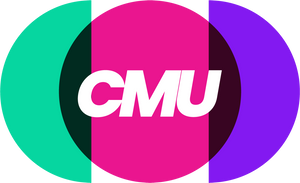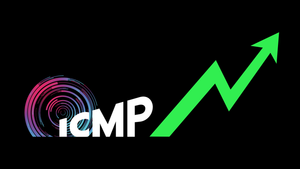Digital platforms are now driving nearly half of all music publisher revenues across key markets, with streaming services and other digital platforms fuelling growth in the song rights business.
That’s according to a new study that puts the spotlight on sixteen major markets, where publishers and writers together generate more than $11 billion in annual revenues. In those sixteen markets combined, digital accounts for 47.1% of publisher income.
While digital has accounted for more than half of recorded music revenues since 2016, in music publishing revenues from the broadcast and performance of music have always been much more significant.
However, digital has started to dominate in recent years in publishing too, as demonstrated by a new study from ICMP - the International Confederation Of Music Publishers - which pulls in data from the biggest music publishing companies, including all three majors, as well as numerous collecting societies from across the world.
The study also confirms that sync - revenues from music being placed in TV shows, films, games and ads - is a much more important revenue stream for publishers than for record labels. In the sixteen markets covered by the ICMP study, sync accounts for 20.2% of publisher income. On a global basis, sync only accounts for 2.2% of recorded music revenues.
The US is by far the biggest songs market in revenue terms, with publishers and writers together generating $6.21 billion, nearly four times larger than the UK’s second-place $1.68 billion. France ranks third at $1 billion. But the real story lies in how differently various markets are evolving.
In particular, just how dominant digital has become in different countries, with significant differences across the sixteen markets in the ICMP study. Digital generates 70.5% of publisher revenues in Mexico, compared to just 20.3% in Italy. That disparity is partly because traditional broadcast and performance revenues are often strongest in Europe, but it’s also a sign of significant digital growth in Mexico.
What’s interesting about ICMP’s study is that it reveals billions in publisher revenues that other industry reports typically miss, which was a key reason why the trade group decided to undertake this research.
“Gathering this much crucial data is an unprecedented achievement”, says ICMP Chair and Universal Music Publishing EVP Jackie Alway. The study, she adds, “will prove immensely useful both for the international music publishing industry and beyond”.
Currently the biggest annual report focused on the revenues of publishers and songwriters is the Global Collections Report from CISAC, which brings together data from most of the collecting societies that represent song rights around the world.
However, while collective licensing is a much bigger deal on the songs side of the music rights business, as compared to the record industry, not all publisher and writer revenues flow through collecting societies, and those other revenues are not captured in the CISAC data. In particular, some digital income and a lot of sync income is not captured in CISAC’s report.
As a result, the most recent CISAC report said that digital now accounts for 38.5% of revenues, compared to the 47.1% shown in the ICMP data. That’s because many music publishers now have direct deals with streaming services covering at least some of their repertoire, in particular Anglo-American repertoire. Where that is the case, not all the digital income flows through the societies.
Meanwhile, in the US, mechanical royalties from streaming administered via the MLC aren’t included in CISAC data, even though many people think of the MLC as a collecting society.
Therefore, while the CISAC report does show that digital is now the biggest revenue generator overall, it slightly under-states the dominance of digital for the industry at large.
With sync, while the use of music in TV programmes is often handled via the collective licensing system, music publishers usually directly license the use of music in movies, games and ads, meaning the upfront fees paid by those sync clients are also not included in the CISAC report. As ICMP’s study demonstrates, those upfront sync fees are substantial.
None of which diminishes the importance of the CISAC report, which - despite the gaps - still provides a solid overview of revenue and regional trends. But the ICMP study - similar to the annual study undertaken by economist Will Page - is seeking to provide a bigger picture overview.
The country level figures in the ICMP study are also very interesting, showing the balance in importance between digital and more traditional revenue streams. They also tell us what percentage of publisher income comes via societies and what percentage comes from direct deals, with 84% of revenues in Japan coming via collective licensing and only 46.2% in Hong Kong.
That said, when comparing country level data, it is important to consider the impact of collective licensing conventions. While the revenue figures in ICMP’s study include both the money received by publishers and payments made directly to songwriters by societies, the revenue stream breakdowns are based only on income that flows through the publishers.
In some countries societies only usually make direct payments to writers on performing rights income, whereas in other countries direct payments apply to both mechanical rights and performing rights income. Which has an impact on how much of the money flows through the publishers.
ICMP’s study was carried out by PMP Strategy and sponsored by GC Partners, and includes data for these sixteen countries: Australia, Brazil, Canada, France, Germany, Hong Kong, Italy, Japan, Mexico, Netherlands, South Africa, South Korea, Spain, Sweden, UK and US.
Although the study seeks to be as comprehensive as possible, it won’t be capturing all direct income of all publishers in each market. Which means the figures, including the headline stat of £11.1 billion in total publisher revenues for the sixteen markets, can be viewed as conservative estimates.

